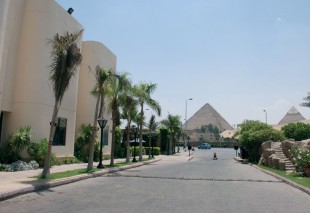

Why the hotel game has changed in Egypt

Viability director Guy Wilkinson reports from Cairo in Egypt, where he predicts a shift in the city’s traditional tourist havens and asks how established hotels will compete in the future
The traditional patterns of tourism in Cairo are about to change. Cultural attractions in the Egyptian capital received 6.2 million visitors in 2008, of which 2.7 million alone went to the Egyptian Museum, arguably one of the greatest museums anywhere. The 15,000m², 58-room Victorian edifice built in 1902 houses the world’s largest collection of ancient Egyptian exhibits (totalling some 120,000 items). It is reputed that many of its collections never see the light of day, being hidden away in dusty vaults that only top TV Egyptologist Zahy Hawass, or perhaps the fictional ‘Bembridge Scholars’ from the film The Mummy, ever see.
Located in Tahrir Square overlooking the Nile, the Egyptian Museum is a stone’s throw from the historic Khan El Khalili bazaar and within easy driving distance of the Citadel and Cairo’s Coptic attractions. With these glorious destinations firmly downtown, it was natural that large hotels would grow up along the banks of the Nile to serve them, not least the massive Marriott, Ramses Hilton, Semiramis InterContinental and Grand Hyatt properties, with 1088, 730, 818 and 715 rooms respectively.
Of course, Cairo’s main drawcard are the Pyramids of Giza, which together with the Sphinx are often visited for just a few hours or a half day by tourists based in the grand downtown hotels. To the disillusionment of many a starry-eyed tourist, the Pyramids are hemmed in on two sides by the ugly urban sprawl of suburban Cairo, and one place to glimpse the famous night-time ‘son et lumiere’ show is upstairs at the scruffy KFC that faces the entrance!
Nevertheless, there is a whole sub-section of Cairo’s hotel stock located in close proximity to the Pyramids, several on the Cairo-Alexandria Desert Road, with the fertile green lands of the Nile Delta on one side and the brutally arid desert on the other. Among these are the famous Mena House Oberoi hotel, built in 1886 as a royal hunting lodge for Khedive Ismail, the King of Egypt, as well as more modern properties under the Le Méridien, Mövenpick, Mercure and other local brands.
Some 30km further out into the desert on Cairo’s western outskirts lies 6th October City, named after the 1973 battle when Egyptians crossed the Suez Canal into Israeli-occupied Sinai. Founded in 1979 by President Anwat El Sadat, the location is home to Egypt’s largest industrial area, the Egyptian Media Production City (EGPC) where many of Egypt’s famous soap operas are made, a number of universities and scores of upscale housing projects that benefit from the area’s somewhat cooler weather than downtown Cairo.
For hoteliers, the area is considered an extension of the Pyramids district, while also benefiting from local corporate demand. The hotels there comprise Hilton, Sheraton and Swiss Inn properties within the upscale Dreamland residential resort community, a Mövenpick serving the stars at EGPC, and a Novotel, which is next to the renowned Dar El Fouad hospital.
Many of these hotels in the Pyramids district are now adding significant new rooms stock in anticipation of the much vaunted opening of the Grand Egyptian Museum. The US $550 million, 100,000m² museum was designed by Ireland’s Heneghan Peng following the world’s largest architectural tender, involving 1557 entries. The iconic Egyptology museum, shaped like a chamfered triangle, will house 150,000 artefacts and include virtual reality exhibits, a children’s museum, a conference centre, a training centre, a theme park and replica Pharaonic workshops.
To be located more or less on the doorstep of the old Mövenpick Resort Cairo Pyramids, the project is now entering phase three of development. Phase two of the project, comprising conservation labs,a fire station and an energy centre, has just been completed and local hoteliers are confident that at least part of the new museum will be open in 2012.
At that point, there will be far less reason for tourists to be based downtown, as by staying at a hotel in the Pyramids/6th October City area, they will be able to visit the museum, the Pyramids at Giza and even those at Sakkara far more easily — without getting embroiled in the dreadful traffic and air pollution that unfortunately blights the downtown areas.
With faster roads, cleaner air and quieter nights, the 6th October hotels will soon have even more going for them, so expect also to see their numbers swell in the future. It will be fascinating to see how Cairo’s giant downtown hotels, as well as the former Nile Hilton — the region’s oldest chain hotel, which thanks to Emaar will re-open as a Ritz-Carlton right next to the old museum — will reposition themselves when the main cultural attractions ‘go west.’